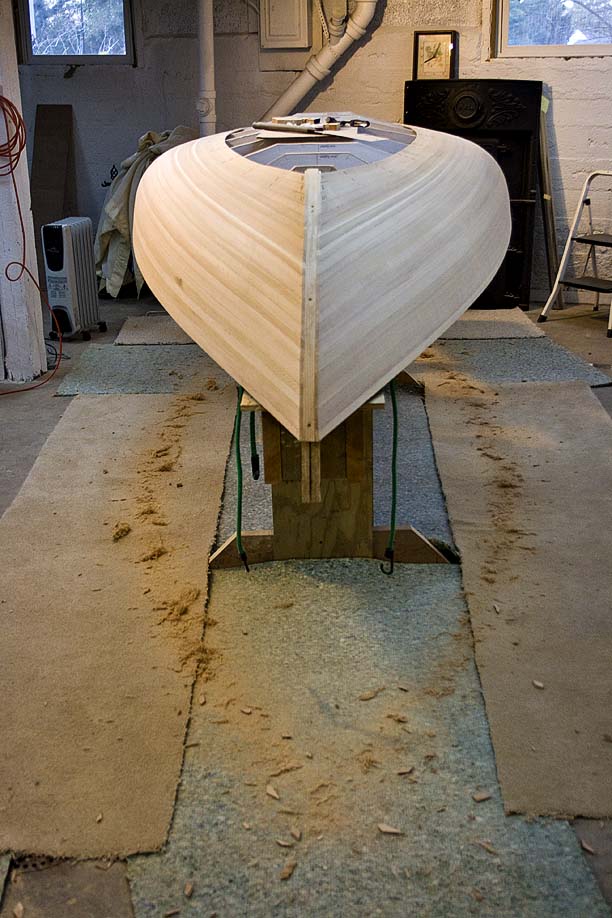First pass at smoothing
I’ve begun to dislike power tools. Must be an age thing.
The bows are closed up. The only thing left is the troublesome “football” section. There are several ways to finish off the transition from the hull to the keel, and I’m still undecided on which way to go. To give myself time to think it over, I figured I’d start smoothing the parts of the hulls already done. It’s contemplative work.
When one of my grandfathers died and I inherited the contents of his shop, there were a few things in his collection of tools that I didn’t recognize. One was a set of cabinet scrapers. Some call them card scrapers. I didn’t know enough at the time to know what they were. Nothing more than thin, flat pieces of tempered steel, one was the shape of a rectangle about the size of a Hershey bar, the other a funny little crook necked thing. I thought they were drafting tools, and at some point lost the rectangle. Pity. Turns out I love them so much I made several – busting them out of some old saw blades – and then bought some more. They’re cheap, less than 10 bucks a piece for the good ones, and amazing tools for all their simplicity.
There’s definitely a place for power tools. But they’re crude, loud, dumb and dangerous, so the benefits have to be large to make up for all the downsides, in my opinion. When I say dumb I mean that – the power behind a hand tool is your muscle with a brain attached, and there’s a constant feedback loop in action when you use it. The power behind, say an electric drill with a sanding disk attached, is nothing but brute force, and blind by comparison. For knocking down a lot of wood in a hurry, a drill or grinder works great, but knowing when NOT to use one seems to be the trick.
I did one side of one hull with nothing but cabinet scrapers and a little touch up sanding. The difference in the sanded areas was so noticeable I went back over them with the scrapers. “Scrapers” is a poor name for these things. They don’t scrape, they shave. Instead of scratching the wood and filling the air with sawdust, the way sandpaper does, they shave very thin slivers off that clump together and fall to the ground, leaving the surface smooth as glass. And they don’t get gummed up with glue. The flat metal edge naturally levels a surface, or you can bend thinner cards to different curves and get smooth contours. Very cool. And very handy on a curvy boat, with both concave or convex surfaces. No noise, no danger, no mess. Basically no way to gouge the wood.
After doing one side, I figured I’d knock down the high points on the others with the disk sander first. Big mistake. Yeah, after about twenty minutes I was done, but now the whole basement is coated in a layer of sawdust, and I still have to go over everything with the cabinet scrapers to remove the ripples and scratches left by the sander. After that, probably a fairing board and then scrapers again. I might have saved myself 30 minutes per side, if that.
Anyway, the bulk work is done, but there’s days of smoothing left. Plenty of time to think on the keels.
melonseed skiff melon seed mellonseed mellon seed






